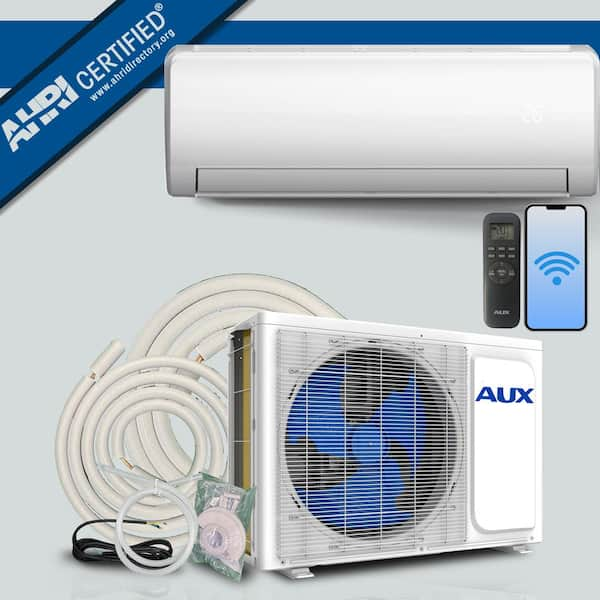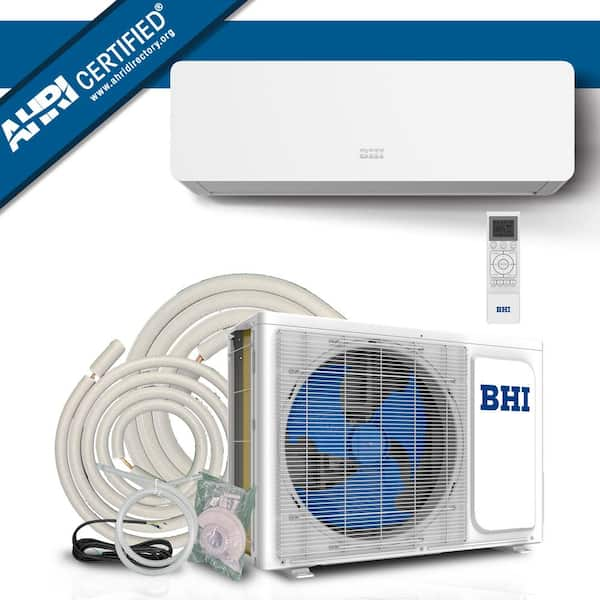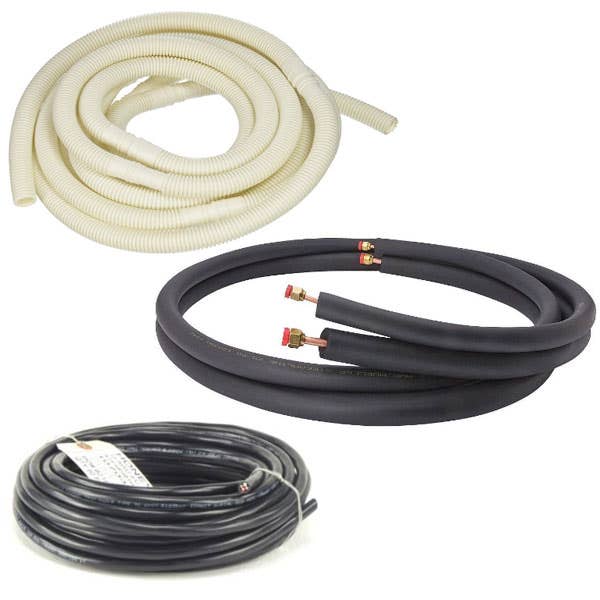Typically, for every additional foot of lineset, you’ll add 0.6 ounces of refrigerant. Your HVAC manufacturer’s specifications can offer precise guidance.
Understanding the correct quantity of refrigerant to add to your HVAC system is crucial for its efficiency and longevity. Refrigerant is the lifeblood of any air conditioning system, and adding the precise amount per foot of lineset ensures optimal performance.
Overcharging or undercharging can lead to inadequate cooling, higher energy bills, and damage to the system. As a homeowner, professional installer, or HVAC technician, always refer to the specific guidelines provided by the system’s manufacturer. They meticulously design their systems to function with exact refrigerant volumes, adjusted for lineset lengths, to deliver the efficiency and performance that keep your spaces comfortably cool.
Importance Of Correct Refrigerant Levels
Getting the right amount of refrigerant in your AC is crucial. It makes sure your unit runs well and lasts a long time. Too much or too little can cause big problems. For each foot of lineset, you need to add the correct refrigerant amount. This keeps your system balanced and efficient. Let’s look at why this balance is so important.
Maintaining Ac Efficiency
The right refrigerant levels mean better efficiency. Your AC doesn’t have to work as hard to cool your home. This saves you money on bills. An efficient system also helps reduce your carbon footprint. Here’s what an efficient AC does for you:
- Cools faster: Your home reaches the desired temperature quickly.
- Uses less energy: This means lower energy bills each month.
- Lasts longer: Stress on the system is reduced, extending its life.
Avoiding Damage To Cooling Systems
If your refrigerant level is off, it can damage your AC. This means costly repairs or replacement. Here are some risks of incorrect refrigerant levels:
- Compressor failure: The AC’s heart could break if it pumps the wrong refrigerant amount.
- Frozen coils: Not enough refrigerant can lead to ice on your coils, stopping them from working right.
- Inefficient cooling: Too much refrigerant also means weak cooling and uneven temperatures in your home.

Credit: www.homedepot.com
Understanding Linesets
Understanding Linesets is crucial for anyone involved with air conditioning (AC) systems. Linesets are the lifelines of an AC system, connecting the indoor and outdoor units. Proper installation and correct refrigerant levels ensure efficient cooling and a longer lifespan for your system. Learn the importance of linesets and how to manage their lengths and refrigerant needs.
Role In Ac Systems
Linesets serve a key purpose in AC systems. They consist of two copper tubes that carry refrigerant between the condenser and the evaporator. One is the suction line, which carries refrigerant in vapour form, and the other is the liquid line, which carries refrigerant in liquid form. The seamless flow of refrigerant is essential for the AC to cool effectively.
- Responsible for refrigerant transport
- Connects indoor and outdoor units
- Key to efficient system performance
Standard And Extended Lengths
An understanding of lineset lengths impacts refrigerant quantity. Manufacturers provide a specified lineset length that your AC system needs for optimal performance, known as the ‘standard length’. If your installation requires a longer lineset, it’s the ‘extended length’, and additional refrigerant is necessary.
| Lineset Length | Refrigerant Addition per Foot |
|---|---|
| Standard Length (Pre-charged) | No additional refrigerant |
| Extended Length | Varies (Check manufacturer’s specifications) |
Different systems require different amounts of refrigerant per foot for extended lengths. The correct amount to add depends on the type and diameter of the lineset, as well as the AC model. Always refer to the manufacturer’s guidelines to determine the exact amount of refrigerant required.
Calculating Refrigerant Needs
Ensuring an air conditioning system has the correct amount of refrigerant is critical. The refrigerant is the lifeblood of any cooling system. It absorbs heat from a room and releases it outdoors. The right amount makes a system efficient. Too much or too little can cause problems.
Starting With Manufacturer Guidelines
The first step in calculating refrigerant needs is to check the manufacturer’s specifications. Each system needs a specific refrigerant charge. This information is in the unit’s manual. It shows how much refrigerant the system needs without the lineset.
Adjusting For Lineset Length
Lineset length can affect refrigerant volume. Every extra foot of lineset might need more refrigerant. To calculate the correct amount:
- Measure the total length of your lineset. This is the distance between the outdoor unit and the indoor evaporator coil.
- Determine the additional refrigerant needed per foot. This is often specified by the manufacturer.
- Multiply the additional refrigerant figure by the lineset length. This shows how much to add to the base amount prescribed.
For example, if the guideline is 0.6 ounces of refrigerant per foot and you have 20 extra feet of lineset:
| Extra Length (feet) | Refrigerant Needed per Foot (ounces) | Total Additional Refrigerant (ounces) |
|---|---|---|
| 20 | 0.6 | 12 |
Add this 12 ounces to the base refrigerant amount. This will give the total refrigerant required for optimum performance.

Credit: hvacdirect.com
Adding Refrigerant
Properly charging an air conditioning system ensures top performance. The amount of refrigerant you add ties directly to the length of your lineset. This section covers how much refrigerant to add per foot of lineset. Understanding this process ensures your system runs efficiently and effectively.
Tools And Materials Required
Before starting, gather the right tools and materials:
- Refrigerant: Required type for your system
- Manifold gauge set: To measure pressure accurately
- Electronic scale: For precise refrigerant measurement
- Refrigerant recovery machine: In case of excess charging
- Lineset calculator: To determine the extra refrigerant needed
- Pipe cutter: Clean cuts for copper lines
- Flaring tool: For secure line connections
- Leak detector: Ensures system integrity
- Safety glasses and gloves: Personal protection
Step-by-step Procedure
Next, follow these steps to add refrigerant:
- Turn off the AC: Ensure power is disconnected.
- Attach manifold gauges: Connect to high and low-side service ports.
- Calculate the needed refrigerant: Use the lineset calculator for precision.
- Place electronic scale: Prep for exact refrigerant measurement.
- Add refrigerant: Follow system specs per foot of lineset.
- Monitor manifold gauges: Watch pressure levels as you charge.
- Check for leaks: Use the detector to ensure system integrity.
- Detach gauges and test AC: Remove equipment and start the system.
Meticulous charging offers peak efficiency and cooling comfort for your space. Always adhere to manufacturer guidelines for safety and system longevity.
Measuring Performance Improvements
Finding the right balance of refrigerant is crucial for an efficient AC system. Measuring performance improvements ensures that the system operates optimally. Learn how temperature and pressure checks, along with energy consumption monitoring, can guide you in adjusting refrigerant levels for peak performance.
Temperature And Pressure Checks
Regular temperature and pressure assessments are key. They help identify if the refrigerant charge is within the desired range. Use a manifold gauge and a thermometer.
- Measure suction line temperature
- Check high-side pressure
- Note ambient and vent temperatures
Compare these readings with manufacturer specs. Differences may indicate the need for more refrigerant per foot of lineset.
Energy Consumption Monitoring
Tracking how much energy your AC uses is a window into its efficiency. After adding refrigerant, monitor the following:
| Before Addition | After Addition |
|---|---|
| Kilowatt-hours used | Kilowatt-hours used |
| System running times | System running times |
A decrease in energy usage indicates a positive impact. This shows the refrigerant per foot of lineset is likely optimal.

Credit: www.homedepot.com
Troubleshooting Common Issues
Ensuring correct refrigerant levels in the lineset is crucial for the optimal performance of your HVAC system. Issues with refrigerant levels can lead to insufficient cooling, higher energy consumption, and potential damage to the system. Let’s tackle the common problems and solutions concerning refrigerant addition.
Recognizing Signs Of Incorrect Refrigerant Levels
Various symptoms indicate your system may have improper refrigerant levels. Stay alert for these signs:
- Warm air output instead of cold.
- Ice forming on the evaporator coils or refrigerant lines.
- Longer cooling cycles or the system continuously running.
- Hissing sounds which may signify a refrigerant leak.
- Elevated energy bills due to inefficient operation.
Correcting Mistakes In Refrigerant Addition
If you suspect your refrigerant levels are off, follow these steps to correct it:
- Locate the service valve on your lineset.
- Connect a refrigerant gauge to check the current pressure.
- Compare the readings with manufacturer specifications.
- Add or retrieve refrigerant accordingly, in small increments.
- Observe the system’s performance after each adjustment.
Note the importance of using the right type and amount of refrigerant as too much or too little can both cause problems. If in doubt, seek professional help.
Frequently Asked Questions Of How Much Refrigerant To Add Per Foot Of Lineset
What Is A Lineset In Refrigeration Systems?
A lineset in refrigeration systems refers to the copper tubing that connects the outdoor air conditioner or heat pump to the indoor evaporator coil. It’s a critical component for the proper circulation of refrigerant.
How Much Refrigerant Per Foot For A Lineset?
Typically, you would add around 0. 6 ounces of refrigerant per foot of lineset after the first 15 feet. However, consult your system’s manufacturer guidelines to ensure accuracy, as requirements can vary.
Does Lineset Length Affect Refrigerant Amount?
Yes, the length of the lineset directly affects the amount of refrigerant needed. Longer linesets require more refrigerant to maintain proper pressure and cooling efficiency throughout the system.
Can Overcharging Refrigerant Damage The System?
Overcharging refrigerant can lead to increased pressure and temperatures, potentially causing damage to the compressor, reducing system efficiency, and leading to premature failure.
Conclusion
Determining the right amount of refrigerant for your lineset is crucial for optimal cooling performance. Remember, every system is unique, so consult with a certified HVAC technician. With precise calculations and expert advice, your air conditioning will run efficiently all summer long.
Stay cool, stay informed!

